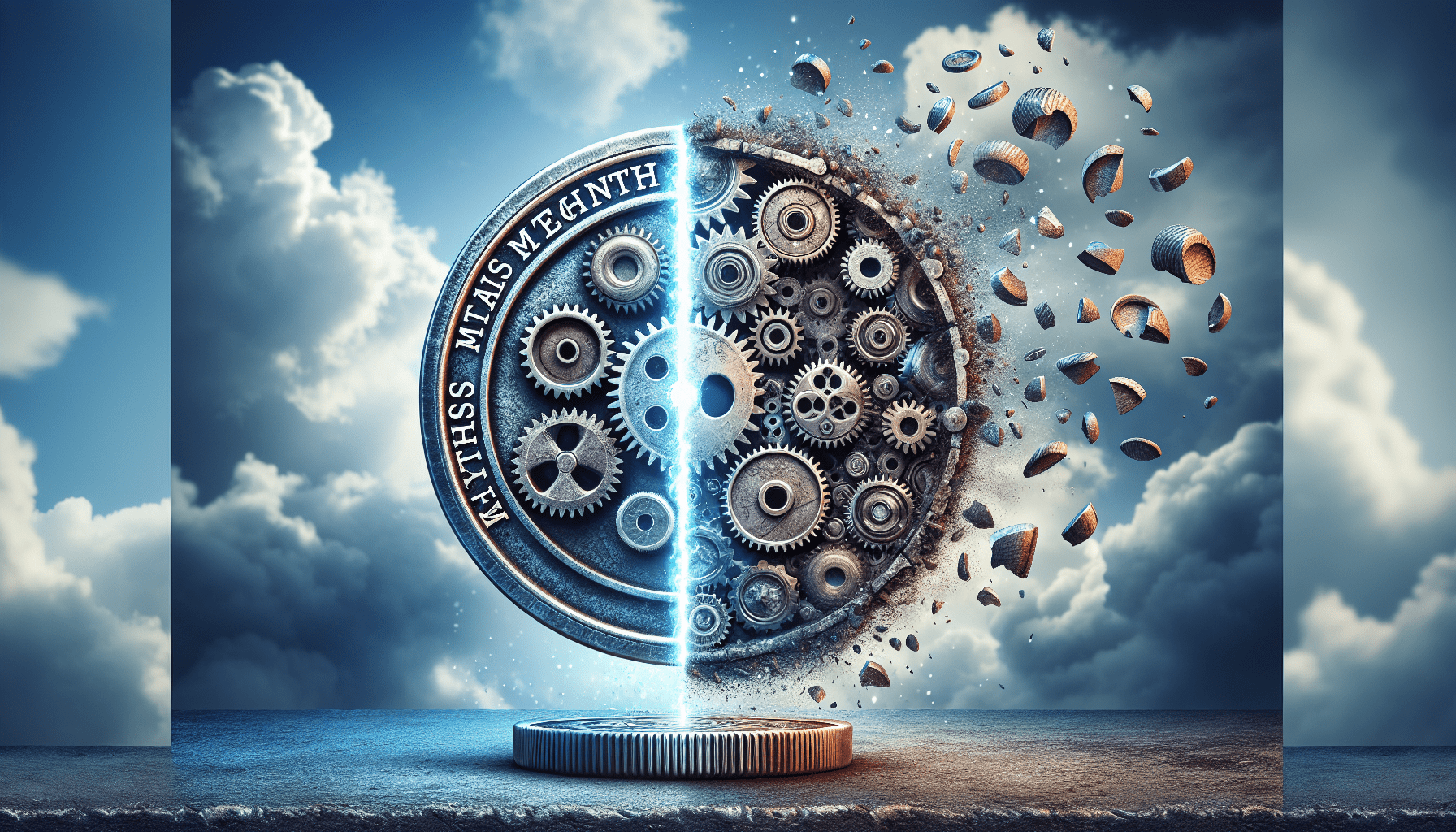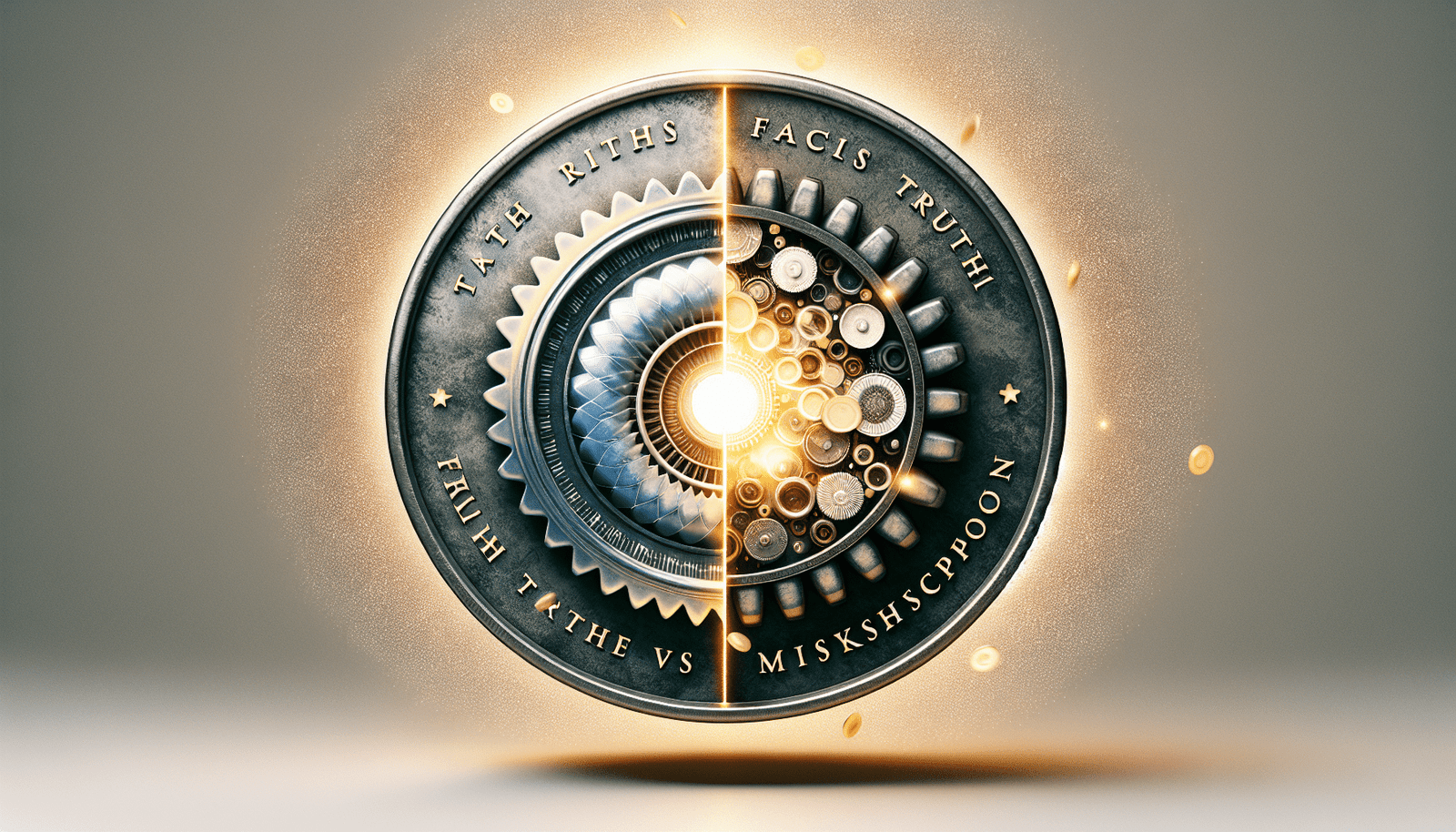Have you ever found yourself wondering just how long your gear will last? Are there certain myths or misconceptions that you’ve heard about gear lifespan? In this article, we will tackle the common myths surrounding gear lifespan and separate fact from fiction. You’ll be surprised to learn the truths behind these myths and gain a better understanding of how to take care of your gear for maximum longevity. So, let’s dive in and debunk these myths once and for all!
Myth 1: Expensive gear lasts longer
When it comes to purchasing gear, many people believe that spending more money on expensive brands guarantees a longer lifespan. However, this is not always the case. Price alone does not guarantee longevity. Expensive gear might have premium features and materials, but that doesn’t necessarily mean it will outlast gear with a lower price tag. Quality is a more important factor to consider when assessing the lifespan of gear. It is essential to do thorough research, read reviews, and look at the reputation of the brand before making a purchase.
Several factors can affect the lifespan of gear. The most critical factor is how well the gear is constructed and the quality of its components. Gear made with durable materials and built to withstand rigorous use will generally last longer. Additionally, proper maintenance and care play a significant role in prolonging gear lifespan. Regular cleaning and inspections can help identify issues early on and prevent further damage. It’s important to remember that the lifespan of gear is not solely determined by its price tag.
Myth 2: Gear needs to be replaced regularly
A common misconception is that gear needs to be replaced regularly, regardless of its condition. The lifespan of gear varies depending on various factors, such as the quality of the gear, frequency of use, and the level of maintenance it receives. Understanding the lifespan of gear is crucial to determine whether or not it needs replacement.
Proper maintenance can significantly extend the lifespan of gear. By following the manufacturer’s guidelines for cleaning, storing, and using the gear, you can minimize wear and tear and prevent premature degradation. It is essential to regularly inspect gear for signs of damage or deterioration and address any issues promptly. However, there will come a time when replacing gear is necessary. Signs such as significant wear, irreparable damage, or outdated technology indicate that it’s time to invest in new equipment.

This image is property of images.pexels.com.
Myth 3: Older gear is obsolete
The emergence of new technology often leads people to believe that older gear is automatically rendered obsolete. However, this is not always true. While advancements in technology can certainly enhance gear performance, not all old gear becomes outdated.
Functionality should be the primary consideration when determining if gear is obsolete or not. If the gear still performs its intended function effectively and meets your requirements, there may be no need to replace it. Instead of focusing solely on age, take into account the specific features, capabilities, and compatibility of the gear.
It’s also worth noting that some older gear may have a timeless design or a classic appeal that still holds value, even if it may lack the latest cutting-edge technology. Ultimately, the decision to replace old gear should be based on whether it is meeting your needs rather than solely on its age.
Myth 4: Repairing gear is not worth it
When gear malfunctions or shows signs of wear, many people immediately assume that repairing it is not worth the cost and effort. However, repairing gear can often be a cost-effective alternative to replacing it entirely.
The cost-effectiveness of repairing gear depends on various factors, such as the extent of damage, availability of replacement parts, and the overall condition of the equipment. In many cases, repairing gear can be significantly cheaper than investing in a brand new replacement.
Knowing when to repair or replace gear can be challenging. As a general rule, minor issues that can be fixed without compromising the overall performance and safety of the gear are good candidates for repair. On the other hand, if the gear has significant damage or the repair costs exceed the value of the equipment, it may be more practical to replace it.
When seeking repair services, it is crucial to find reliable and reputable professionals. Research local repair shops, read customer reviews, and ask for recommendations from trusted sources to ensure that your gear is in capable hands.

This image is property of images.pexels.com.
Myth 5: Higher gear lifespan equals better performance
While it may seem logical to assume that longer gear lifespan equates to better performance, this is not always the case. The lifespan of gear is influenced by various factors, but it does not guarantee superior performance.
Performance depends on a combination of factors, including design, build quality, technology, and the specific purpose for which the gear is used. A gear may have a long lifespan but offer mediocre performance compared to newer, more advanced counterparts. It’s important to consider the specific needs and requirements for your gear and prioritize performance over lifespan.
Understanding gear obsolescence is essential when assessing performance. As technology advances, gear can become outdated, even if it still functions properly. It’s crucial to stay informed about the latest innovations and evaluate whether your gear can keep up with the evolving demands of your activities or profession.
Myth 6: Gear lifespan is the same for all types of gear
Gear lifespan can vary significantly depending on the type of gear and its intended use. Different factors affect different types of gear, making it important to consider these variations when assessing lifespan.
For example, electronic gadgets and devices often have shorter lifespans due to the rapid pace of technological advancements. On the other hand, durable gear, such as camping equipment or outdoor gear, can withstand harsh conditions and last for many years if properly maintained.
Understanding the lifespan of different gear categories is crucial when making purchasing decisions. Researching the specific lifespan of different gear types, reading customer reviews, and seeking expert advice can help you make informed choices and invest in gear that meets your long-term needs.
It’s also important to note that maintenance and care practices can vary depending on the type of gear. Each gear type may have specific cleaning and storage requirements to ensure optimal performance and longevity.

This image is property of images.pexels.com.
Myth 7: Gear lifespan is solely determined by usage frequency
While usage frequency is undoubtedly a factor that affects gear lifespan, it is not the sole determinant. Other factors also play significant roles in how long gear lasts.
Factors such as the quality of the gear, the environment in which it is used, and the level of maintenance and care it receives all contribute to its overall lifespan. Even gear that is used infrequently can deteriorate over time if not properly stored and maintained.
Proper storage and handling are crucial in maximizing gear lifespan. Storing gear in suitable conditions, such as protecting it from extreme temperatures or moisture, can help prevent degradation. Additionally, handling gear with care and avoiding unnecessary rough handling or impacts can help minimize wear and tear.
Taking a holistic approach to gear maintenance, including usage, storage, and care, will ultimately determine how long gear lasts.
Myth 8: Gear warranties guarantee extended lifespan
While gear warranties provide reassurance and protection for consumers, they do not guarantee an extended lifespan. It’s important to understand the coverage and limitations of warranties when it comes to gear.
Warranty coverage typically includes manufacturer defects or faults that occur within a specific timeframe. However, warranties usually do not cover damage caused by misuse, accidents, neglect, or normal wear and tear. It’s essential to read the warranty terms and conditions carefully and understand what is covered and what is not.
Factors such as regular maintenance, proper usage, and care play a more significant role in ensuring gear longevity than relying solely on warranty coverage. Following the manufacturer’s guidelines and recommendations can help maximize the lifespan of your gear.

Myth 9: Cleaning gear too often can decrease its lifespan
Cleaning gear regularly is essential for maintaining its performance and prolonging its lifespan. Contrary to the misconception that cleaning gear too often can be detrimental, proper cleaning practices are actually beneficial.
Different types of gear require specific cleaning practices. Whether it’s removing dirt and grime from outdoor gear or gently wiping electronic devices, understanding the appropriate cleaning methods for each gear type is essential to prevent damage.
Improper cleaning techniques, such as using harsh chemicals or excessive force, can indeed decrease the lifespan of gear. It’s important to follow the manufacturer’s recommendations for cleaning methods and products. Using non-abrasive cleaners, soft brushes, and lint-free cloths are generally safe options for most gear.
The frequency of cleaning gear depends on various factors, such as the level of use and the environment in which it is used. Regular cleaning helps remove contaminants that can cause damage or impair performance. By practicing proper cleaning techniques, you can ensure that your gear stays in optimal condition and lasts longer.
Myth 10: Gear lifespan is not affected by environmental conditions
Environmental conditions have a significant impact on gear lifespan. Exposure to extreme temperatures, moisture, humidity, dust, and other environmental factors can cause damage and accelerate wear and tear.
Properly storing gear in suitable conditions is crucial to protect it from environmental hazards. Extreme temperatures can affect the integrity of materials, leading to warping, cracking, or other forms of damage. Moisture and humidity can promote rust, mold, and corrosion. Dust and other contaminants can impair the functionality of gear, especially electronics.
Protecting gear from harsh environmental conditions is essential to ensure its longevity. Store gear in dry, clean areas away from direct sunlight or excessive moisture. When using gear outdoors, consider using protective cases, covers, or shelters to shield it from the elements.
Regular inspections and maintenance can also help identify any environmental damage or concerns early on. By addressing these issues promptly, you can prevent further deterioration and extend the lifespan of your gear.
In conclusion, debunking the myths surrounding gear lifespan is crucial for making informed decisions when it comes to purchasing, maintaining, and replacing gear. Price alone does not guarantee longevity, and expensive gear is not always superior to more affordable options. The lifespan of gear varies depending on factors such as quality, maintenance, and usage. Older gear is not automatically obsolete unless it fails to meet your specific needs and requirements. Repairing gear is often a cost-effective alternative, and warranties do not guarantee extended lifespan. Cleaning gear and protecting it from environmental conditions are essential practices for maintaining and prolonging its lifespan. By separating fact from fiction, you can make smart choices that ensure your gear lasts as long as possible.


